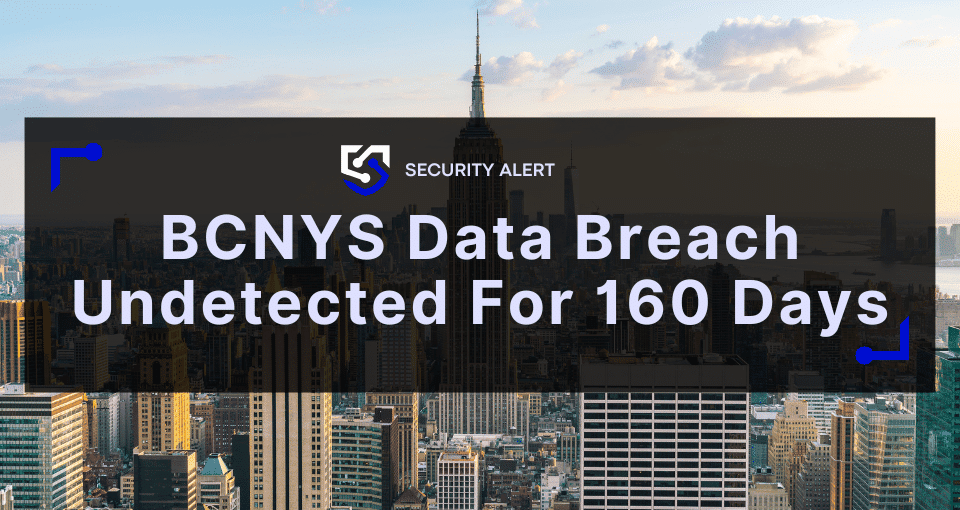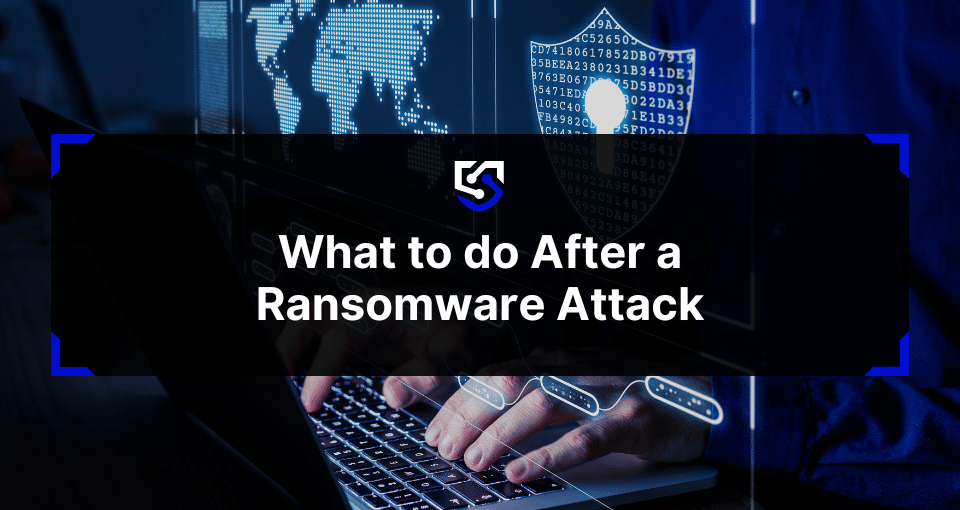Key Takeaways:
- The BCNYS data breach exposed over 47,000 individuals’ data for 160 days before detection.
- The incident triggers legal action under New York’s SHIELD Act and the federal HIPAA law due to the mix of personal, financial, and health data.
- The long detection delay highlights a failure in preparation and identification, key phases of a Digital Forensics and Incident Response (DFIR) plan.
In February 2025, an unauthorized party gained access to the internal systems of BCNYS, the state’s largest employer association. Over a two-day period, the attackers exfiltrated a comprehensive collection of data belonging to over 47,000 individuals. The organization did not detect the data breach until August 4, nearly six months after the attack, triggering an immediate legal firestorm.
The compromised data creates a perfect toolkit for identity theft and fraud:
- Personal Identifiers: Full names, Social Security numbers, dates of birth, and state ID numbers.
- Financial Details: Bank account and routing numbers, payment card information with PINs and expiration dates, and taxpayer IDs.
- Protected Health Information (PHI): Medical diagnoses, treatment details, prescription information, provider names, and health insurance data.
In response, BCNYS began notifying affected individuals on August 15, 2025, and offered complimentary credit monitoring services to those whose Social Security numbers were exposed.
Breach overview and timeline
The BCNYS incident is defined by the catastrophic 160-day gap between the initial compromise and its eventual discovery, revealing significant deficiencies in security monitoring and threat detection. While BCNYS acted to contain the threat upon discovery, the damage had been done, with sensitive data in the hands of malicious actors for months.
The combination of personally identifiable information (PII), financial data, and protected health information (PHI) makes this breach particularly severe. The exposure of this specific data mix immediately triggered a complex web of legal obligations and prompted swift action from the legal community.
Multiple national class-action law firms, founded on allegations of negligence, have launched investigations, signaling their intent to file lawsuits on behalf of the 47,329 victims.
Which data breach laws apply in New York State?
The BCNYS data breach falls under the jurisdiction of two powerful and distinct data protection laws: New York’s SHIELD Act and the federal HIPAA statute.
The Stop Hacks and Improve Electronic Data Security (SHIELD) Act sets a high bar for data security in New York. The law has two primary components directly relevant to the BCNYS incident:
- Any business holding the private information of New York residents must “develop, implement, and maintain reasonable safeguards“. These safeguards must be administrative, technical, and physical.
- Requires businesses to notify affected New York residents of a breach “in the most expedient time possible and without unreasonable delay“. A 2024 amendment clarified this by setting a hard deadline, requiring notification “within thirty days after the breach has been discovered”. Notice must also be sent to several state authorities, including the Attorney General and the Department of Financial Services. Failure to comply can result in significant civil penalties.
BCNYS Data Breach
Compliance Failure Analysis: HIPAA vs. NY SHIELD Act
| Regulation | Key Requirement | BCNYS Compliance Failure |
|---|---|---|
| NY SHIELD Act | Reasonable Safeguards: Businesses must "develop, implement, and maintain reasonable safeguards" (administrative, technical, and physical) to protect private information. | Critical Failure: The 160-day gap between the initial intrusion and its discovery strongly indicates a failure to maintain reasonable technical safeguards for security monitoring and threat detection. |
| Timely Notification: Notify affected NY residents "in the most expedient time possible," with a hard deadline of "within thirty days after the breach has been discovered." | While the notification on Aug 15th (11 days after discovery) meets the 30-day window, the core issue remains the extreme delay in discovery itself due to inadequate security. | |
| HIPAA | Notification Window: Notify affected individuals of a breach of unsecured PHI "without unreasonable delay and in no case later than 60 calendar days after discovery." | Similar to the SHIELD Act, the 11-day notification timeline post-discovery is compliant. However, the legal definition of "discovery" is the critical point of failure. |
| Reasonable Diligence: A breach is considered "discovered" not just when it is known, but when it "would have been known by exercising reasonable diligence." | Catastrophic Failure: Allowing sensitive data to be exfiltrated for nearly six months undetected is a clear violation of the "reasonable diligence" standard. Regulators will argue the discovery date should have been in February, making the August notification catastrophically late. |
- Because the stolen data included detailed medical and health insurance information, the breach is also governed by HIPAA. The HIPAA Breach Notification Rule has several key requirements:
- Covered entities must notify affected individuals of a breach of unsecured PHI “without unreasonable delay and in no case later than 60 calendar days after discovery“.
- For breaches affecting 500 or more people, the Department of Health and Human Services (HHS) must be notified within the same 60-day window, and prominent media outlets in the affected jurisdiction must also be alerted.
- A breach is considered discovered not just when it is actually known, but when it “would have been known by exercising reasonable diligence”. Regulators and plaintiffs will argue that with proper security monitoring, BCNYS should have discovered the February breach far earlier than August, potentially making their notification catastrophically late and a clear violation of federal law.
Digital forensics and incident response (DFIR) strategies
The BCNYS breach underscores the reality that preventing 100% of intrusions is impossible. The true measure of an organization’s resilience is how quickly and effectively it can respond. This is the domain of Digital Forensics and Incident Response (DFIR), a methodical approach for managing the aftermath of a cyberattack.
A mature DFIR strategy, often based on the SANS Institute’s framework, follows a six-step lifecycle: Preparation, Identification, Containment, Eradication, Recovery, and Lessons Learned.
The BCNYS incident reveals a critical failure in the first two phases:
- Preparation: This phase involves creating an incident response plan, assembling a response team, and deploying the right security tools for visibility, such as Security Information and Event Management (SIEM) systems. The long detection delay suggests these foundational elements were insufficient.
- Identification: This is the process of detecting a security breach. Effective identification relies on technology and skilled analysts to spot anomalies and indicators of compromise.
For legal counsel, BCNYS’ delay represents a critical failure of the standard required by HIPAA, creating significant legal exposure.
Lessons learned
The BCNYS data breach is a case study in which the most catastrophic failure was not the initial intrusion, but the 160 days of silence that followed. The fallout from this breach offers three lessons:
1. Technology defines diligence
Diligence is not a passive state, but an active, ongoing process of proactive threat hunting.
Organizations must understand that the legal requirement is that they have implemented and are actively monitoring tools like Security Information and Event Management (SIEM) systems, Endpoint Detection and Response (EDR) solutions, and network traffic analysis tools. The absence of alerts from such systems for nearly six months suggests they were either missing, misconfigured, or their outputs were ignored.
2. Plans require practice
An effective cybersecurity program includes regular, simulated exercises and drills that pressure-test an organization’s ability to identify, escalate, and react to a potential intrusion.
These drills force an organization to answer critical questions before a crisis hits: Who gets the first alert on a weekend? What is the protocol for analyzing anomalous data exfiltration? Who has the authority to isolate a network segment?
And those questions are just the tip of the iceberg. A well-rehearsed plan builds the institutional muscle memory needed to transform a multi-month disaster into a contained, multi-day incident.
3. Detection equals prevention
The attackers were only inside the BCNYS network for two days, but the data they stole remained “in the wild” for months, vastly increasing the risk of fraud and identity theft for over 47,000 people.
The failure of Identification led to a cascade of failures in containment, notification, and legal compliance, turning a manageable security event into a financial and reputational catastrophe.
Organizations must shift their mindset and budgets to reflect the reality that the most significant risk is not the known attacker at the gate, but the unknown one already inside.
What to do in case of a data breach or cyberattack?
If you suspect a cyberattack, contact our professional 24/7 emergency incident response team immediately to help contain the threat, minimize damage, and begin the investigation.
Following containment, a thorough digital forensics investigation is necessary for meeting regulatory reporting requirements, supporting insurance claims, and preparing for litigation.







